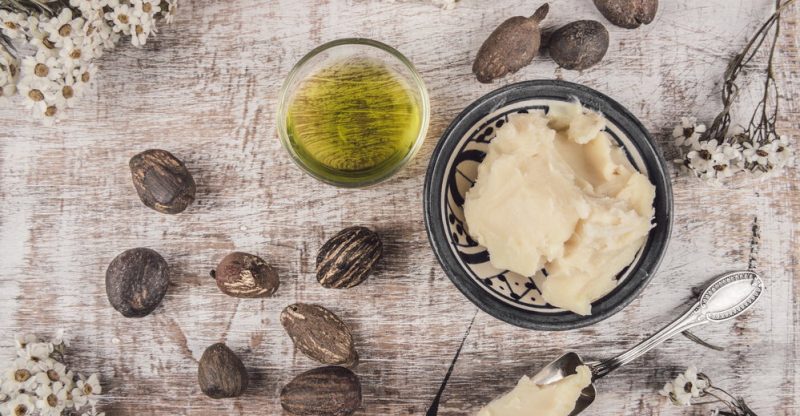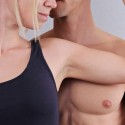15 Shea Butter Uses for Skin and More
Shea butter is a staple in many peoples’ pantries, and it’s not just for the skin. It is a type of fat that can be extracted from the nut of the African shea tree. The versatility of this ingredient has allowed us to use it in so many different ways that you’ll probably be surprised at how often we’re using Shea Butter. There are many ways to incorporate this amazing natural product into your life, from hair care products to candles!
It’s a chemical that’s found in a lot of cosmetics and natural skincare products. Shea butter, which is 100 percent pure, unprocessed, and raw, is rich in all-natural vitamin A and may help with blemishes and wrinkles, stretch mark avoidance during pregnancy, muscular tiredness, dermatitis, and radiation treatments for specific medical disorders.
What are the benefits of shea butter for your skin? Butyrospermum parkii, or shea butter, is a particularly moisturizing and hydrating butter. When applied to the skin, it instantly softens and smooths it. Shea butter, on the other hand, has even more well-documented advantages.
Shea nuts and shea fat (shea butter) are a substantial source of anti-inflammatory and anti-tumor-promoting chemicals, according to research released by the National Center for Biotechnology Information. In addition, according to another research published in the American Journal of Life Sciences, shea butter increases collagen formation, indicating that it has anti-aging properties.
What Is Shea Butter?
What is the origin of shea butter? It derives from Butyrospermum parkii, commonly known as Vitellaria paradoxa, a shea tree. The shea tree is a mystical tree that grows throughout Central Africa. What is the origin of shea butter? Shea butter is extracted from the tree’s nuts after removing the outer shell. Hand-crushing the nuts allows them to be gently toasted into the butter.
After that, the butter is kneaded in a big basin of water by hand to separate the oils, also known as fatty acids. The healing capabilities of these fatty acids are what make them one of the top solutions for skincare and more. Finally, the shea butter is lifted from the top and chilled until it solidifies to get the final product.
Butyrospermum parkii has been utilized for topical reasons for ages, and some even claim that Cleopatra and the Queen of Sheba used unrefined shea butter! Shea butter is now quite popular for skin and hair, so you’ll see it in many cosmetics.
Is it possible to eat shea butter? The pure form is edible, and it’s often used in food preparation in African nations with other oils. Raw African shea butter is often substituted for cocoa butter; however, the flavors of shea butter and cocoa butter are very different.
Composition
Shea butter is high in stearic and oleic acids and the antioxidants vitamin E and A. The oil extracted from the shea tree’s fruit includes 45–50% oleic acid, 30–41 percent stearic acid, 5–9% palmitic acid, and 4–5% linoleic acid. Cold-pressed processes are used to obtain the finest shea butter, with no additional chemicals or preservatives.
Butyrospermum parkii has a smooth texture and does not liquefy at room temperature, but it will soften in your hands and become easier to apply. Compared to other plant-sourced lipids like grape seed oil, olive oil, and canola oil, it contains comparatively significant saturated fatty acids (like MCT oil).
Shea nut oil is on the Food and Drug Administration’s list of Generally Recognized as Safe (GRAS) direct food ingredients (GRAS). Shea butter is often used in cosmetic items, but it’s also used as a cocoa butter alternative in a range of confections and chocolate.”
Health Advantages
1. Moisturizer with anti-inflammatory properties
Shea butter for face and body moisturizing is by far one of the most popular applications for this natural product. Unfortunately, unhealthy synthetic chemicals are included in far too many skincare products. Butyrospermum parkii, on the other hand, is a natural component that works wonders on the skin.
It’s also an anti-inflammatory! Shea nuts and shea fat (shea butter), according to research published in the Journal of Oleo Science, aid in decreasing inflammation. Furthermore, both shea nuts and butter contain anti-tumor chemicals known as cinnamate esters (which are also found in cinnamon).
2. Offers anti-aging benefits
Retaining the skin’s natural moisture level is critical if you want to decrease the outward indications of aging, and Butyrospermum parkii is a good moisturizer.
Raw shea butter may help reduce the appearance of fine lines and wrinkles by encouraging skin tissue cell renewal and softness. In addition, Shea butter was shown to reduce numerous indicators of aging in clinical research involving 30 participants, According to the American Journal of Life Sciences. Another clinical investigation found that using shea butter twice a day to dry, fragile, or aging skin reduced photoaging in 49 participants. So it’s no surprise that shea butter is often found in many natural anti-aging skin creams.
3. It hydrates both the scalp and the hair
Shea butter may also be used to treat hair and scalp problems. It works similarly to coconut oil for hair in sealing in moisture, moisturizing the scalp, reducing dandruff, and giving general protection from harsh conditions when used topically. So which is healthier for your skin: shea butter or coconut oil? Both are natural moisturizers that may be used on your skin, scalp, or hair to enhance your health and look.
Warm the shea butter gently to soften it before massaging it into your hair and scalp. Leave on for 20–30 minutes for optimal effects. Then, as usual, rinse, wash, and condition. Shea butter may offer volume when used to only the roots during styling and its hydrating effects on hair and scalp.
4. Relieves dry winter skin, windburn, and sunburn
Shea butter in its raw form is ideal for soothing irritated winter skin. Its moisturizing properties penetrate deep into the skin, providing additional moisture and reducing windburn. It works wonders on cracked and dry feet, hands, elbows, and knees.
Because most sunscreens include harsh chemicals that penetrate the skin and into our systems, shea butter is a far better, nutritious alternative. While this sunscreen only has an SPF of roughly 6, it may give some protection more naturally and is ideal for wearing under makeup. It’s a combination of shea butter moisturizer and sunscreen! If you do acquire a sunburn, Butyrospermum parkii is also a good choice.
5. It has the potential to reduce stretch marks
What is the best way to get rid of stretch marks? While many people assume that Retin-A and laser treatments are the only ways to get rid of stretch marks, raw shea butter’s natural vitamin A concentration may be able to assist. Shea butter may help to minimize the appearance of stretch marks and other scars due to its great healing and moisturizing characteristics. In addition, some individuals use it to smooth and soften their skin, which helps to reduce the appearance of cellulite.
6. Protects babies from diaper rash
Shea butter’s anti-inflammatory and antifungal characteristics may help battle yeast, making it an excellent diaper rash treatment for your infant. In addition, raw shea butter may increase blood circulation, which promotes cell regeneration and collagen formation.
When it comes to fast treating diaper rashes, both cell regeneration and collagen creation are critical. Because most children are exposed to a huge number of chemicals via various items on the market, this is the ideal DIY diaper rash cure for avoiding harmful chemicals while still ensuring your baby’s comfort and speedy recovery.
Uses
Have you ever wondered how to use shea butter on your skin, hair, or even your next meal? Shea butter may be substituted for dairy butter or olive oil in recipes. It’s also really simple to produce your own skincare products at home. Raw shea butter is soft enough to use daily and is ideal for various applications, including face creams, body lotions, lip balms, and even shaving cream.
Check out this list of possible shea butter applications:
- Body Butter Lotion
- Stretch Mark Cream with Shea Butter
- Shea Butter Lip Balm with Lavender Mint
- Skin Soother for Bug Bites
- Body Bar with Honey and Herbs
- Lotion of Frankincense and Myrrh
- Shea Butter Baby Lotion (DIY)
- Shaving Cream (Natural)
- Shea Butter Moisturizer with Lavender, Peppermint, and Frankincense
- Lemon Whipped Salt Scrub
- Oily Skin Moisturizer (DIY) (a potential way to use shea butter for acne)
- Heel Balm with Lavender and Shea Butter
- Ultra-Moisturizer Lotion (Homemade)
- Frankincense and Shea Butter Eye Cream (Homemade)
- Body Scrub with Shea Butter
About the product
Shea Butter Comes in a Variety of Forms
If you get the most out of shea butter, buy only high-quality premium raw pure shea butter. According to the American Shea Butter Institute, Shea butter includes cinnamic acid, an anti-inflammatory agent, which is a chemical closely linked to the cinnamon in your kitchen cupboard. Because there is less cinnamic acid in less pure shea butter, the advantages of shea butter are considerably reduced.
I looked for unrefined shea butter with a nutty fragrance and a beige tint. Refined shea butter has been chemically changed, removing the bulk of its beneficial characteristics while also turning it white. Furthermore, many shea butters includes undesirable chemicals such as synthetic scents, which may drastically reduce the advantages.
Where to Purchase
Are you looking for a place to get shea butter? Pure, organic shea butter may be found at your local health food shop or online. Search for raw/unrefined and organic ingredients to ensure the highest quality. Shea butter may be found in skincare products for the face and body. Shea butter soap and body wash are also available.
How to Keep Things Safe
Shea butter should be kept away from heat and light. If you have unrefined shea butter, it’s usually best to keep it in an airtight container in a cold, dry location. Shea butter should be utilized within 18 months after its extraction from the seed since its therapeutic characteristics may deteriorate with time.
Butter will be firmer in the colder months and softer in the hot months, which is typical.
Precautions
Shea butter is widely regarded as a natural moisturizer that is both safe and effective. Like those from the shea tree, tree nuts may cause allergic reactions in certain persons. There have, however, been no known adverse responses to the tree’s butter. It’s also typically regarded as safe in food quantities.
Last Thoughts
- Butyrospermum parkii (shea butter) is derived from the shea tree, which is endemic to Central Africa.
- It is a popular natural moisturizing component that may be found in various cosmetics.
- Butyrospermum parkii is also used in cooking and may be used in place of other oils or butter.
- Butyrospermum parkii, which is unrefined and organic, may be found at your local health shop or online and can be used in DIY skincare recipes.
- Butyrospermum parkii is well-known for its ability to hydrate skin and promote collagen formation, making it an excellent option for a natural anti-aging component in store-bought or homemade beauty products.
Frequently Asked Questions
What are the benefits of using shea butter on your skin?
A: Shea butter is a type of vegetable-based moisturizer that has been used for centuries in Africa, Europe, and America. It can be applied directly to the skin or shampooed through hair as a conditioner. It may also be combined with other ingredients like honey, beeswax, or cocoa butter to make various products such as lotions and lip balms. In addition to its use on the skin, it provides an overall healthy feeling due to its high content of vitamin A and unsaturated fats, which helps protect against dryness
Is shea butter good for the face?
A: Yes, shea butter is good for the skin in general. This was a popular question because it’s not just about face but also body and hair care. Shea Butter is high in Vitamins A & E, which are both antioxidants that help to protect cells from damage caused by free radicals and pollution, as well as Vitamin F, which helps promote healthy elasticity of your skin.
Can shea butter clear dark spots?
A: Shea butter is a natural moisturizer that can clear dark spots on the skin.
FDA Compliance
The information on this website has not been evaluated by the Food & Drug Administration or any other medical body. We do not aim to diagnose, treat, cure or prevent any illness or disease. Information is shared for educational purposes only. You must consult your doctor before acting on any content on this website, especially if you are pregnant, nursing, taking medication, or have a medical condition.
HOW WOULD YOU RATE THIS ARTICLE?





